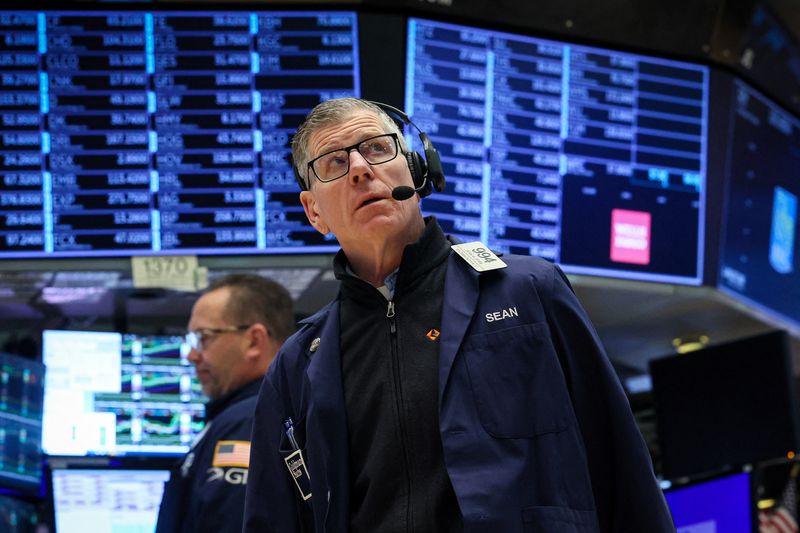Two National Guard members shot near White House
Investing.com--U.S. stocks traded in a mixed fashion Monday as investors hunkered down for more third-quarter earnings, while several Federal Reserve officials are scheduled to provide more cues on monetary policy.
At 09:35 ET (13:35 GMT), the Dow Jones Industrial Average fell 130 points, or 0.3%, while the S&P 500 index rose 13 points, or 0.2% and NASDAQ Composite climbed 110 points, or 0.6%.
Q3 earnings season picks up
The third-quarter earnings season is set to pick up in earnest this week, with more results from the country's banking giants as Bank of America (NYSE:BAC), Citigroup (NYSE:C) and Goldman Sachs (NYSE:GS) are set to report on Tuesday, and Morgan Stanley (NYSE:MS) on Wednesday.
Additionally, Johnson & Johnson (NYSE:JNJ), chipmaking bellwether ASML (AS:ASML) and streaming giant Netflix (NASDAQ:NFLX) are due to report during the week.
Investors will be largely focused on whether corporate earnings were able to persevere despite pressure from high interest rates and sticky inflation.
Elsewhere, Boeing (NYSE:BA) stock fell 2.6%, with managers at the aircraft manufacturer likely to find out later Monday more details about plans to slash around 17,000 positions, around 10% of its global headcount. It will also delay the first deliveries of its 777X plane by a year and book $5 billion in losses in the third quarter.
B. Riley Financial (NASDAQ:RILY) stock soared 22% after the Wall Street Journal reported the Investment bank has agreed to sell its appraisal and valuations unit, Great American, to asset-management firm Oaktree Capital for about $400 million.
Fed speakers in focus
This week also sees addresses from a number of Fed officials, which are likely to provide more cues on the central bank’s plans to cut interest rates further.
Governor Christopher Waller, Minneapolis Fed President Neel Kashkari are expected to speak later on Monday, and there is strong interest in what they might say about the central bank's rate outlook.
Markets will get another update on the health of the U.S. consumer on Thursday, in the form of the latest retail sales data.
Investors will also study the latest news about additional stimulus in China, the second largest economy in the world.
China’s finance ministry said in a weekend briefing that it will implement fiscal stimulus measures, including more debt issuance and support for provincial governments. But the government did not provide key details on the timing and scale of the plans.
Crude slumps on Chinese worries
Oil prices fell sharply Monday, retreating after OPEC cut its demand growth forecasts, while Chinese inflation data raised doubts about the health of the country's economy.
By 09:35 ET, the Brent contract dropped 1.8% to $77.62 per barrel, while U.S. crude futures (WTI) traded 2% lower at $74.07 a barrel.
Figures released over the weekend showed consumer price growth in China unexpectedly eased in September, while producer prices marked nearly two years of contraction -- data which bodes poorly for demand in the world’s biggest oil importer.
The Organization of the Petroleum Exporting Countries cut its forecast for global oil demand growth in 2024, marking the producer group's third consecutive downward revision.
OPEC, in a monthly report released earlier Monday, said world oil demand will rise by 1.93 million barrels per day (bpd) in 2024, down from growth of 2.03 million bpd it expected last month. For next year, OPEC cut its 2025 global demand growth estimate to 1.64 million bpd from 1.74 million bpd.
China accounted for the bulk of the 2024 downgrade, as OPEC trimmed its Chinese growth forecast to 580,000 bpd from 650,000 bpd.
(Ambar Warrick contributed to this article.)
